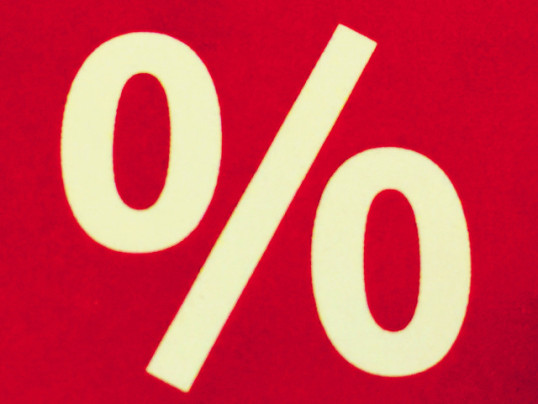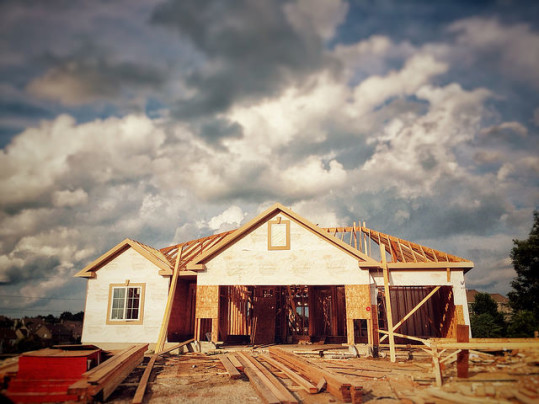Sales of previously owned homes were expected to drop in June, following three consecutive months of gains. But, according to new numbers from the National Association of Realtors, home resales beat economists’ expectations and rose 1.1 percent from the month before. The improvement keeps sales at their highest annual pace since February 2007. Lawrence Yun, NAR’s chief economist, says the housing market has had a solid first half of the year. “Existing sales rose again last month as more traditional buyers and fewer investors were able to close on a home despite many competitive areas with unrelenting supply and demand imbalances,” Yun said. “Sustained job growth as well as this year’s descent in mortgage rates is undoubtedly driving the appetite for home purchase.” Mortgage rates still hovering near all-time lows may, indeed, be making a difference – especially where first-time home buyers are concerned. In June, for example, the share of first timers rose 3 percent and is now at its highest point in four years. Regionally, sales were up over last year in three of four regions, with the West running relatively even with one year earlier. Inventory, however, remains a concern. In June, the number of homes available for sale fell 0.9 percent and is now 5.8 percent lower than it was at the same time last year. More here.
Archive for July 2016
Slight Rate Increase Slows Mortgage Demand
The number of Americans requesting mortgage applications fell 1.3 percent last week, according to the Mortgage Bankers Association’s Weekly Applications Survey. The decline was due, in part, to a slight increase in average mortgage rates. The survey found rates up for 30-year fixed-rate mortgages with both conforming and jumbo balances, as well as 15-year fixed-rate loans. Mortgage rates for loans backed by the Federal Housing Administration were unchanged from the previous week. Michael Fratantoni, MBA’s chief economist, told CNBC that refinance volume remains high while purchase demand has been slow since the holiday. “Recent swings in mortgage rates have been relatively muted compared to Treasury rates, although on net both remain below their levels from just prior to the Brexit vote,” Fratantoni said. “Refinances fell slightly with rising rates last week, but the refinance share of 64.2 percent of applications was the highest since February of this year, as purchase volume was slow to come back following the July 4th holiday.” Demand for loans to buy homes, though 16 percent higher than last year, has been hampered by lower-than-normal inventory levels across much of the country. The MBA’s weekly survey has been conducted since 1990 and covers 75 percent of all retail residential mortgage applications. More here.
New Home Construction Jumps In June
As a home buyer or seller, new residential construction numbers may not seem like they have a whole lot to do with you. But, at a time when there are more buyers than there are homes available for sale, the pace of new home construction has a significant impact on home prices – which are most likely very important to you. In today’s market, for example, home prices are increasing in many areas due to the fact that there is more demand than there is supply. When there are fewer homes for sale, home prices rise as competition among buyers increases. As new homes are built, however, those price increases will begin to moderate and buyers will have more options to choose from. For that reason, the U.S. Census Bureau and the Department of Housing and Urban Development’s New Residential Construction report is widely cited as a good barometer of the housing market’s health. According to the most recent report, new home construction rose more than economists’ expected in June. In fact, the number of single-family homes that began construction during the month was 4.4 percent higher than the month before. The improvement was largely due to a 46.3 percent spike in the Northeast and a 17.4 percent pickup in the West. Also in the report, building permits – which are a good indication of future housing starts – rose 1 percent from May. More here.
Builders Still Optimistic About The Market
Because builders have an unique view of the new home market, the National Association of Home Builders tracks their perspective each month as part of their Housing Market Index. The survey has been conducted for 30 years and scores builders’ responses on a scale where any number above 50 indicates more builders view conditions as good than poor. In July, builder confidence was relatively unchanged from the month before, falling one point to 59. Robert Dietz, NAHB’s chief economist, says the market remains poised for growth. “The economic fundamentals are in place for continued slow, steady growth in the housing market,” Dietz said. “Job creation is solid, mortgage rates are at historic lows and household formations are rising. These factors should help to bring more buyers into the market as the year progresses.” Among the survey’s three components, measuring buyer traffic, current sales, and expectations for the next six months, future expectations fell furthest, dropping three points to 66. Regionally, the Midwest, South, and West all continued to post positive numbers, while the Northeast trails behind with a three-month moving average of 39. Builder confidence is considered an important measure of housing’s health due to the important role new homes play in balancing the market. More here.
Down Payment Savings By The Day
Coming up with a down payment can be a struggle, especially for first-time buyers. That’s because – unlike repeat buyers who can use the sale of their current house to help fund their new home – first timers have to come up with the money the old fashioned way. That means, saving it – which can sometimes be an obstacle for younger buyers. A new report from realtor.com takes a look at just how much you’d need to set aside each day in order to save up the average down payment in each of the country’s 15 largest metro areas. To calculate this, they took the median listing price and average down payment in each area, then figured out how much you’d need to save each day over 5 and 10 year periods. For example, to save the average down payment on a median-priced home in the New York metro area, you’d have to save $19.49 every day for 10 years. On the other hand, saving the same amount each day would be enough to come up with a down payment in Phoenix in just 5 years. But what if you don’t have $20 to put away each and every day? Well the article recommends things like putting aside tax refunds and work bonuses, picking up a weekend job, or cutting back on spending. More here.
How Renters & Owners See Buying Differently
The National Association of Realtors’ Housing Opportunities and Market Experience survey asks Americans about their confidence in the economy and views on the current real estate market. According to the most recent results, there’s a growing gap between renters and homeowners when it comes to how they view buying a home in today’s market. In fact, the survey found 62 percent of renters said it was a good time to buy – 6 percent lower than it was at the end of last year. On the other hand, 80 percent of current homeowners say now’s a good time to buy. Lawrence Yun, NAR’s chief economist, says there’s a fairly simple reason for the disparity. “Most homeowners appear to realize that if they’re ready to sell, they’ll likely find a buyer rather quickly and be able to use the sizeable equity they’ve accumulated in recent years towards their next home purchase,” Yun said. “Meanwhile, renters interested in buying continue to face minimal choices, strong competition, and home prices growing faster than their incomes.” Combined with the fact that many renters are young, saddled with student loan debt, and facing rapidly rising rent, there are many obstacles facing young Americans who want to buy. However, as more homeowners take advantage of market conditions and put their homes up for sale, the market will balance and help provide more opportunities for potential buyers. More here.
Mortgage Rates Continue To Fall
According to the Mortgage Bankers Association’s Weekly Applications Survey, average mortgage rates fell again last week across all loan categories, including 30-year fixed-rate mortgages with both conforming and jumbo balances, loans backed by the Federal Housing Administration, and 15-year fixed-rate loans. Mortgage rates are now at their lowest level since May 2013. Michael Fratantoni, MBA’s chief economist, told CNBC rates continue to fall because of economic volatility overseas. “Mortgage rates dropped again last week to their lowest level in more than 3 years, as investors continued to seek safety in US assets given the global turbulence following the Brexit vote,” Fratantoni said. That economic uncertainty has rates falling and refinance activity up. Last week, mortgage application demand increased 7.2 percent largely due to a spike in the refinance index. On the other hand, purchase activity – which is generally less sensitive to rate fluctuations – was relatively flat from the week before and down 5 percent year-over-year. But, because the July 4th holiday fell on a different week last year, those numbers may be slightly skewed. The MBA’s weekly survey has been conducted since 1990 and covers 75 percent of all retail residential mortgage applications. More here.







